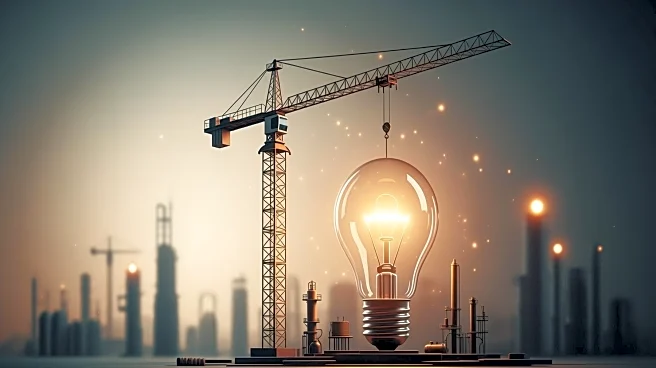What's Happening?
Pakistan's industrial sector has experienced a significant recovery in the fiscal year 2024-25, following two years of contraction. This rebound is largely attributed to increased construction activity, improved energy supply, and enhanced fiscal and monetary
coordination. According to the State Bank of Pakistan's Annual Report 2024-25, the industrial sector grew by 5.3 percent, reversing a previous contraction of 1.2 percent. Key contributors to this growth include higher value addition in electricity, gas, and water supply, as well as increased public development spending. The report highlights that the recovery in industry and services has helped raise overall GDP growth to three percent in FY25, despite a slowdown in agriculture. The easing of monetary policy, which began in June 2024, has also played a role, with the policy rate reduced from 20.5 percent to 11 percent by January 2025.
Why It's Important?
The recovery of Pakistan's industrial sector is crucial for the country's economic stability and growth. The sector's rebound has contributed to a more stable macroeconomic environment, reducing borrowing costs and improving external accounts. This has created favorable conditions for industry by stabilizing the exchange rate and ensuring foreign-exchange availability for raw-material imports. The growth in the industrial sector, particularly in electricity, gas, and water supply, has been supported by government subsidies and measures to improve power sector efficiency. However, challenges remain, such as high energy tariffs and limited access to long-term financing, which continue to constrain industrial competitiveness. The report emphasizes the need for structural reforms to sustain industrial growth, including improvements in energy pricing, logistics, and financial deepening.
What's Next?
Sustaining the industrial sector's growth will require consistent power-sector reforms, technology upgrades, and diversification beyond traditional sectors. The State Bank of Pakistan suggests focusing on energy-efficient production, adoption of renewable sources, and integration of small and medium enterprises into industrial value chains. Encouraging investment in import-substituting industries, such as petrochemicals and engineering goods, is also recommended to reduce external vulnerabilities. The report concludes that addressing deep-seated challenges, such as low productivity and narrow export diversification, through consistent policies and better coordination between fiscal, monetary, and industrial strategies is essential for sustained economic growth.














